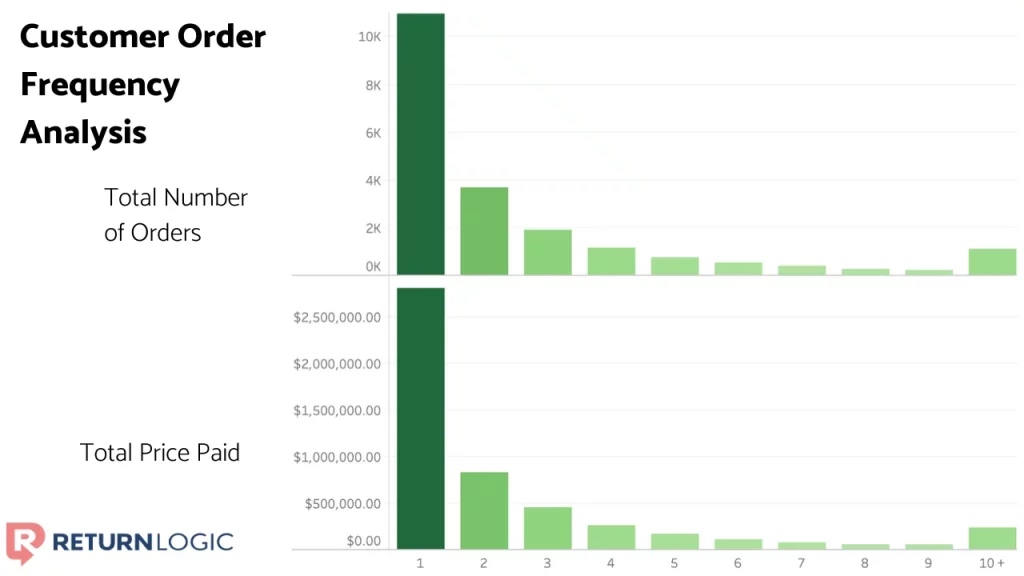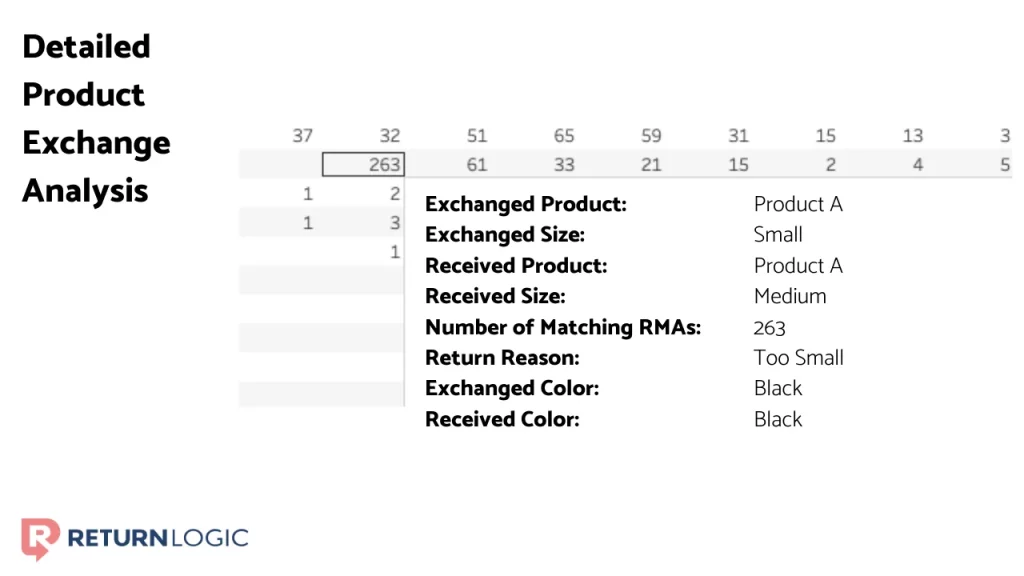How to Turn Ecommerce Returns into a Retention Marketing Opportunity

The Importance of Ecommerce Retention Marketing
Customer Acquisition Costs (CAC) are on the rise. Across industries it has been established that it is more profitable to retain a current customer than to acquire a new customer.
And while the impact of new customer acquisition on the health of an ecommerce business must not be underestimated, we assert that smart investments and touch points with existing customers are an equally vital part of success.
Facebook has embedded itself as the dominant force in digital marketing – many retailers we work with rely heavily on the platform for its ability to reach prospective customers, and also engage past customers. Given the intense competition in some markets, it is not uncommon to see Customer Acquisition Costs exceeding $100 per purchase with Facebook Ads.
This leaves retailers with a thin margin on first-time buyers. Here lies the power of retaining purchases, and moreover driving additional purchases.
Table of Contents
1. The Misconception of Returns
3. Reimagining the Return as Retention Marketing
4. [BONUS] 4 Tips to Turn Your Returns into a Profit Center
From our data, we can confirm that there is a remarkable falloff between the first and second purchase. For many of our clients, less than half of customers made a second purchase through years of data.
The graphic below depicts this decline, both in terms of unique orders and total spend, across purchases for one retailer in particular.

A trend we observe across apparel brands, in particular, is that the drop is greatest between the first and second purchase and begins to plateau around the fourth or fifth purchase.
The customers who make it to that point are most likely loyal to the retailer, meaning that they will continue to purchase with little effort or investment from the company.
However, first-time or second-time buyers are far less likely to purchase again. Without the right experience and touch points, they will fall through the retailer’s grasp. This is why retention marketing is so important.
We spoke with Jon Stern, VP of Client Experience at Retention Rocket, an omni-channel marketing platform. Our greatest take-away was that retention is not just about getting additional purchases from shoppers. “The real trick is engagement,” he stated.

He cites the typical shopper touch points as a welcome message upon signing up, a thank you after a purchase, and plenty of promotional material along the way. But fewer brands, he observes, prioritize the more conversational aspects of engagement.
With as many as 30-40% of first-time purchases resulting in return, we see a retailer’s Return Center as a critical place to enhance the customer’s journey and increase the likelihood of further purchases.
The Misconception of Returns
We hear it all the time – returns are a cost, an unfortunate byproduct of the ecommerce landscape. Many retailers take no substantial actions to mitigate their returns problem. At best they try to minimize the amount of returns.
But to eliminate returns is to impede sales. We enable and encourage retailers to optimize their returns, finding the right balance of product, price, and policies to maximize the revenue that they retain rather than chasing either sales or returns.
As Stern put it, “A return isn’t a loss. It’s a customer that was close to getting what they wanted.”
The Story Behind a Return
A return does represent a shortcoming in the customer experience, some type of misalignment between expectation and reality. And just like any lapse, retailers can learn from returns to create a better experience not just for that particular customer, but for subsequent customers as well.
The main points of interest in a return itself are the return type (refund, exchange, store credit, warranty, etc.) and return reason (customizable by retailer, but too big, too small, did not match description, did not like, damaged, etc.).
While seemingly innocuous, these factors can be indicative of what went wrong and what the impact on revenue may be.
Combined with future purchase activity, we can use returns to more completely understand the customer journey as a cycle of related purchases instead of a random stream of orders.
Here Comes the Data!
To best learn from returns, we will investigate return rates and reasons split out by product category. We will also dive into exchanges, to see what products are being exchanged, and what products are being received in exchanges.
For the sake of this analysis, we will focus in on two retailers:
- High-Impact Sports Bras and Other Athletic Wear for Women
- Fashion Essentials for Women

Here, we see the Return Rates and Reasons by Product Category for one of the retailers. While tops do not have the most noticeable return rate, they do skew remarkably too big in return reasons, indicating that this is a substantial cause of returns. Sweaters, as well, tend to be too large.
These insights can quickly influence product alterations, or adjustments to product descriptions on the website. Either measure will better align the customer’s expectation with reality, ultimately reducing the return rate.
Reimagining the Return as Retention Marketing
Once we identify the root causes of returns and intervene to improve the return rate, we can advance to a more strategic perspective. Despite our efforts, there will still be returns.
So how can we position the return experience as the catalyst for the next purchase rather than simply the end of the current one?
With as many as a third of customers coming through the page at some point in their customer journey, it is critical to ensure that the returns experience is optimized for convenience and reflects the brand.
A bleak, impersonal page bogged down by excessive text and policies would not be found at any other point in the pre-purchase ecommerce experience. Why start now?
Stern of Retention Rocket suggested using the Returns Center as a conversation, engaging with the shopper to figure out why she would like to return a product, asking if she needs any assistance in doing so, and trying to recommend products that she will love.

Clearly, the returns experience does not have to just be a pain to minimize. By diving into returns behavior, we can reconstruct it as a profit driver in its own right.
This begins with understanding exchanges:
- What products are being exchanged?
- What products are being received in exchange?
By finding common such pairs, we can extract patterns within exchanges and eventually recommend a product for an exchange.
A good deal of effort is invested in cross-selling within a purchase, but far less is focused on enhancing the customer experience and saving the purchase in the event of a return.

We see that the most common type of exchange overall is within the same product, indicating an exchange for a different variant (different size or color). Also, very prevalent are exchanges of “Product K” for “Product M” and vice versa.
By digging deeper into variants and investigating these products, we can more precisely identify the disconnect between the customer’s expectation and reality in order to better serve customers in the future.

We see that exchanges differ based on the Return Reason listed, and often intuitively line up with the reason itself.
For example, you could imagine that return reason “Just Didn’t Like It” implies a more negative sentiment toward the product being exchanged.
We see that in this case the most common exchanges are for different products. As we will continue to see, Return Reason can be an indicator of what may occur within the exchange.
Below is an example showing that for Return Reason “Too Small,” the most common exchanges are within the same product, just trading up a size. This demonstrates the value of articulate return reasons in anticipating the resulting behavior in a return.
By perceiving a customer’s reason for returning a product, we can intervene to find a product or fit that will better suit the individual. This can both save the sale and create a heightened level of customer experience that can drive future purchases.

4 Tips to Turn Your Returns into a Profit Center
We can see that returns are a regular and healthy part of the customer experience and you should approach it as an opportunity to get closer to your customers. To that end, here are four tips to help you along the way:
1. Ask Them How They’re Doing
Follow up with people who’ve made a return and ask them about their experience. Make sure their issue has bee resolved and they’re happy with their purchase. This can be done using a survey, a text message, or a phone call.
Retention Rocket could be an extremely helpful tool to accomplish this. They specialize in implementing text messaging and push notifications for ecommerce companies to get closer to shoppers. This provides insightful feedback for the retailer, while making the shopper feel valued and heard.
2. Go the Extra Mile
Send them special promotions and offers. Use the returns event as an excuse to make them feel special. Give them a call, send them a note, go the extra mile to turn a negative experience into a customer service win.
3. Treat Your Loyal Customers Differently
Use returns data to segment and identify your most loyal customers. If a loyal customer makes a return, make sure you treat them like royalty.
4. Make Product and Marketing Improvements
Leverage returns data to reduce your future returns rate by continuing to optimize your products. Use Return Reasons to fix sizing chart issues, color issues, product images, and product descriptions. Use Returns Comments to identify product sizing and quality issues early so you can make the necessary changes.
Thinking of the customer journey as a cycle of interrelated purchases, we recognize that while a return may be the end of a purchase, it is the beginning of the next.
You can optimize your return rate, and further, use the returns experience as an opportunity to excite the consumer.
Stern recommended using returns data to fuel campaigns. This could be looking at shoppers who returned an item and have not bought since, and trying to re-engage them. Or, it could be using purchase and returns information to ask shoppers what they prefer in certain items.
In doing so, you take the power back and transform a return from a cost center into a profit center.






